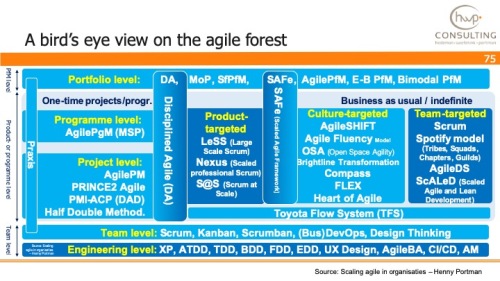 Via my network I received the first version of the Scream Guide; a comprehensive guide (22 pages) to organizational screaming, written by Michael Küsters.
Via my network I received the first version of the Scream Guide; a comprehensive guide (22 pages) to organizational screaming, written by Michael Küsters.
Scream is a framework built as an imitation of Scrum, giving unwitting observers the appearance that the organization might be using Scrum. Scream is a framework for cementing the status quo, preserving existing mindsets and creating an illusion that things are improving. Scream is lightweight and easy to do, but difficult to get rid of.
Scream is intended as a humorous reflection opportunity of anti-patterns you might observe and not meant to be implemented.
Scream uses the pillars of obfuscation, asymmetric information and moving targets and the following value definitions:
-
- “Courage” means accepting more work than can be done
- “Commitment” means doing it in unpaid overtime
- “Openness” means still taking another task whenever asked
- “Focus” means juggling many balls without being caught dropping any
- “Respect” means not complaining about any of the above when talking to managers.
The Scream Team consists of a Product Owner (responsible for maximizing the workload of the Development Team), the Development Team (consists of people who do the work that they are told to do), and a Scream Master – plus their manager (a strong, demanding manager who suppresses autonomy, creativity and personal growth within the Scream team). Scream Teams appear self-organizing and cross-functional when indeed the entire show is run by the manager.
Prescription is an important element of Scream, and Scream events (sprint, sprint planning, daily scream, sprint review and sprint retrospective) are used to interrupt work, control team members and maximize the dependency on outside management interference.
 After detailed descriptions of the roles, events, artifacts and rules you get a list of supporting practices. E.g. Scream practice supports a number of special sprints: kick-off sprint, sprint zero, document sprint, refinement sprint, testing sprint, integrating sprint, hardening sprint, deployment sprint, release sprint, stabilization sprint and innovation sprint.
After detailed descriptions of the roles, events, artifacts and rules you get a list of supporting practices. E.g. Scream practice supports a number of special sprints: kick-off sprint, sprint zero, document sprint, refinement sprint, testing sprint, integrating sprint, hardening sprint, deployment sprint, release sprint, stabilization sprint and innovation sprint.
Conclusion: Scream isn’t a new tree in the agile forest. It is fun to read and every sentence is an agile antipatern. This guide will definitely help to mature your own chosen agile framework tree implementation.
To download: www.agilegothenburg.org/blog/2019-posts/the-scream-guide-is-out
To refresh your memory have a look at the latest Bird’s eye view on the Agile forest.
See for the corresponding article: a-bird’s eye view on the agile forest article
















Liked it because these scrum anti-patterns are real 🙂
Pingback: Is Scream a new tree in the Agile forest? — Henny Portman’s Blog – abrachan.in
Ha ha this is a funny perception, it does make a very compelling point about the tents of agile though 👍